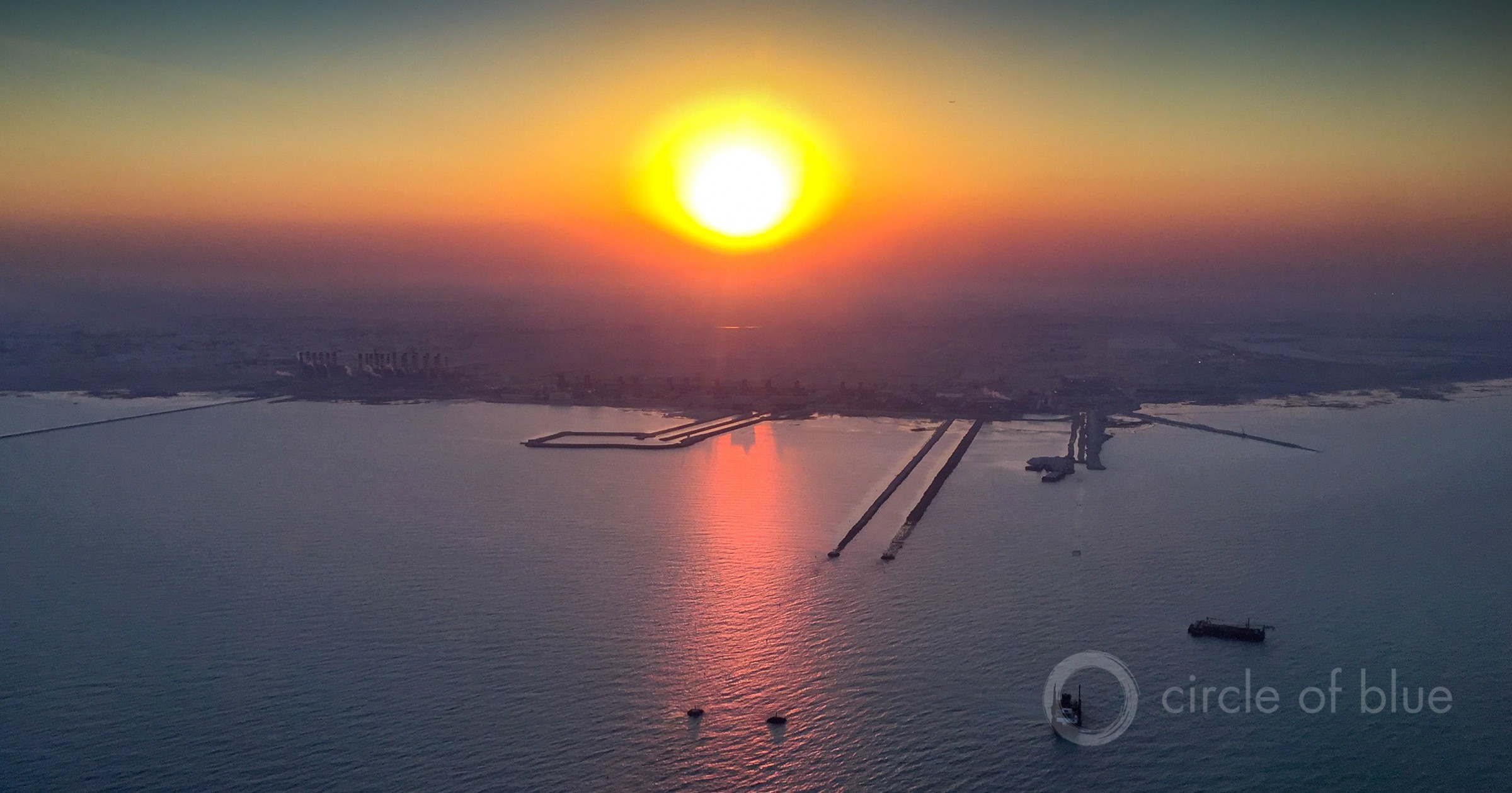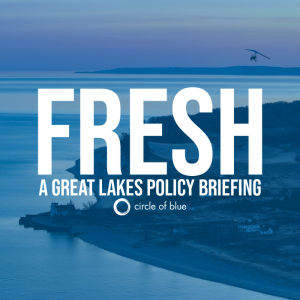The Stream, November 23, 2022: Behind the Scenes at Qatar’s World Cup, Vast Water-Making Apparatus Must Keep Country Hydrated

The Ras Abu Fontas desalination plant supplies freshwater for Doha, Qatar. It draws seawater from the Persian Gulf. Photo © J. Carl Ganter / Circle of Blue
YOUR GLOBAL RUNDOWN
- The 2022 World Cup kicked off in Qatar amid concerns of water shortages and the environmental impact of large-scale desalination.
- On the final day of COP27, nations agreed to establish a “loss and damage fund” for countries most vulnerable to climate change.
- Another worker died in Indonesia during construction of a dam that continues to endanger both humans and a near-extinct orangutan species.
- Google announced that its data centers consumed a total of 4.3 billion gallons of water globally in 2021.
A new study found that microplastics pervade Pennsylvania’s “cleanest and best protected” streams.
“While many of the waterways sampled had little to no visual litter at the point of access, our samples found that Pennsylvania’s most pristine waterways continue to be contaminated with plastic pollution.” — Pennsylvania’s Pristine Waterways and Microplastics, Report
A survey of 50 Pennsylvania streams between fall 2021 and spring 2022 revealed that each one contained microplastics. According to the study’s authors, 84 percent of streams contained plastic fragments and films such as shopping bags or wrappers. The waterways in the study were considered among the state’s cleanest — all 50 had received either “Exceptional Value” or “High Quality” status from the Pennsylvania Department of Environmental Protection.
The survey adds to a growing body of research that indicates an increased presence of plastics and microplastics in bodies of water around the world. Despite this evidence, the health effects of consuming microplastics remain relatively understudied and unknown.
In context: ‘It’s Raining Plastic’: Researchers Find Microscopic Fibers in Colorado Rain Samples
— Christian Thorsberg, Interim Stream Editor
Recent WaterNews from Circle of Blue
- New Satellite Will See Water’s Big Picture — SWOT mission aims to fill global gaps in key water data.
- 2022 Election Recap: Landslide Victory for Florida City’s ‘Right to Clean Water’ Amendment — Voters approved most water-related initiatives on the November 8 ballot.
The Lead
On Sunday, the much-anticipated and highly-controversial World Cup kicked off in Doha, Qatar. Throughout its lead-up, the event was criticized by human rights activists and scrutinized by football fans. And now, with more than one million tourists expected to attend the tournament, which will run through mid-December, concerns linger over the city’s freshwater infrastructure and usage.
Doha’s water comes from the salty Persian Gulf, which also provides drinking water to arid Saudi Arabia, UAE, and Iran. Removing the salt to make the water drinkable is an energy-intensive process that relies on fossil fuels – one of the main reasons the World Cup is expected to fall short of its carbon-neutral goals. In addition, each of the tournament’s eight turf pitches requires at least 2,600 gallons of water per day for maintenance. In a trial game in September, Qatar’s Lusail Stadium, which seats 80,000, ran out of drinking water by half-time.
This Week’s Top Water Stories, Told In Numbers
450,000
Average gallons of water consumed per day by each of Google’s 23 global data centers, according to the company’s latest water-use report. Altogether, the company consumed 4.3 billion gallons of water in 2021 — the equivalent, it says, of maintaining 29 golf courses in the Southwest United States. Google pledges to “operate on 24/7 carbon-free energy by 2030.”
767
As of 2021, the estimated number of Tapanuli orangutans — the “most threatened” great ape species in the world — that remain in the wild. Their home remains at risk: The Batang Toru hydropower project continues development through the apes’ only known habitat in North Sumatra, Indonesia. Led by PT North Sumatra Hydro Energy, the project has been highly controversial. The Indonesian government has said the dam is part of a national effort to reduce carbon emissions and develop cleaner energy sources, in accordance with the Paris climate agreement. But 17 construction workers have died in the past two years, Mongabay reports, adding to worries that environmental promises — for people and orangutans — will not be met. The dam is expected to be completed in 2025.
On the Radar
A report presented to UN delegates at COP27 outlines $525 billion in combined economic losses attributed to climate change impacts — including drought, floods, and rising temperatures — in 55 of the world’s most vulnerable countries. On the final day of the summit, world leaders agreed to create a “climate reparations” fund, though how it will work, and who will pay, remains unclear.
More Water News
Environmental Justice: Great Lakes states fall behind in EJ policy, a report finds.
Water Limits: The Catalonia region, including Barcelona, will impose water restrictions due to persistent drought and record-low rainfall, outcomes that scientists have attributed to climate change.
Brett writes about agriculture, energy, infrastructure, and the politics and economics of water in the United States. He also writes the Federal Water Tap, Circle of Blue’s weekly digest of U.S. government water news. He is the winner of two Society of Environmental Journalists reporting awards, one of the top honors in American environmental journalism: first place for explanatory reporting for a series on septic system pollution in the United States(2016) and third place for beat reporting in a small market (2014). He received the Sierra Club’s Distinguished Service Award in 2018. Brett lives in Seattle, where he hikes the mountains and bakes pies. Contact Brett Walton






Leave a Reply
Want to join the discussion?Feel free to contribute!